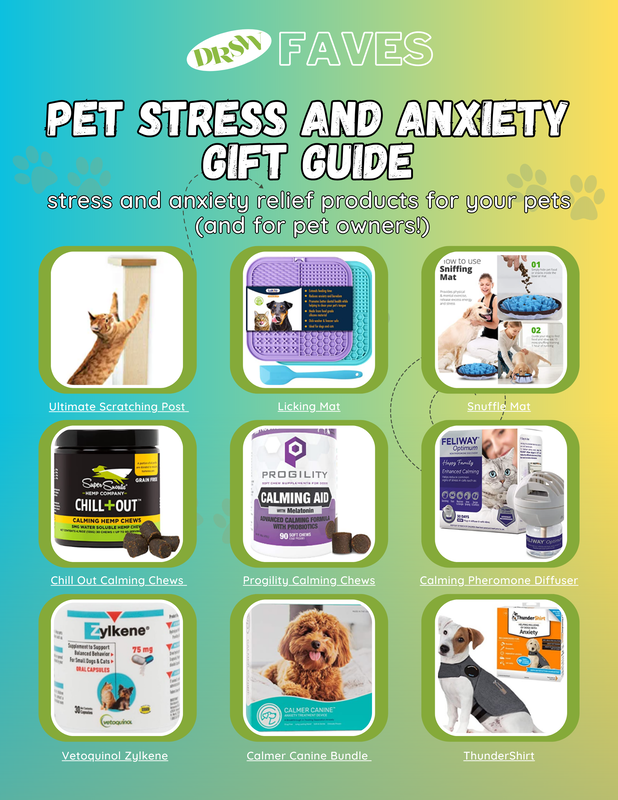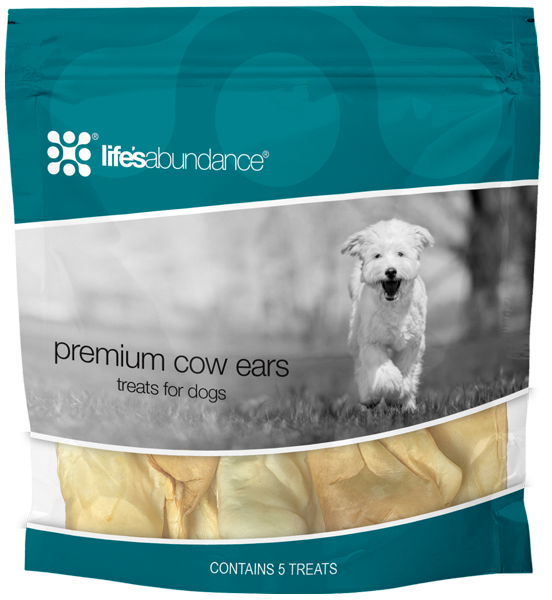|
Our furry friends bring us joy, companionship, and unconditional love (and if you have a Golden, lots of fur). However, just like humans, pets can also experience stress and anxiety that can be profound in some dogs and cats. Understanding the signs, causes, and ways to manage stress in our beloved companions is not only crucial for their well-being, but also for ours. EVERYTHING IS RELATED In this blog post you will learn the signs of stress and anxiety in pets, the signs of stress, how to manage stress and anxiety at home, and when to call the vet. Signs of Stress and Anxiety in PetsPets, whether dogs, cats, or other animals, can exhibit various signs of stress and anxiety. One common indicator is a change in their behavior. For example, a typically friendly and outgoing pet may become withdrawn, hiding away or avoiding interactions with family members. or overly grumpy. On the other hand, some pets may become excessively clingy, seeking constant attention and reassurance. Changes in appetite, such as decreased or increased eating, as well as vomiting and diarrhea, can also be signs of stress. Additionally, pets may exhibit destructive behaviors, such as excessive chewing, digging, or scratching, which can be a result of anxiety. Some pets can even pull out their hair, urinate and defecate inappropriately where and when they shouldn't, or lick themselves enough to cause sores. Needless to say unaddressed stress and anxiety in pets shortens lifespans, decreases quality of life (both theirs and yours!), and (between veterinary bills and buying a new carpet because your cat urinated all over it multiple times, is expensive! This blog post is intended to help you learn more about stress and anxiety in pets, including the causes, symptoms, how to manage it at home, and when to get the vet involved. Causes of Stress and Anxiety in PetsThere are several factors that can contribute to stress and anxiety in pets. Changes in routine or environment, such as moving to a new home or the addition of a new family member, can be stressful for pets. Veterinary and grooming visits can be very stressful for pets. Other things that can stress pets out include:
Additionally, some pets may be more prone to anxiety due to their breed or individual temperament. Separation anxiety is a specific type of stress that many pets experience when separated from their owners. Dogs, in particular, are prone to this condition. When left alone, dogs with separation anxiety often engage in destructive behaviors, such as chewing household items or incessantly barking and howling. They may also exhibit signs of distress, such as panting, pacing, or urinating inappropriately. My husband had a dog named Jahallah who had profound noise phobia - chewed through dry wall and chainlink to escape. It was heartbreaking for him. This is why understanding and addressing separation anxiety as early as possible before things escalate as well as getting professional help is crucial for the well-being of everybody involved. Managing Stress and Anxiety in PetsManaging stress and anxiety in pets requires a multi-pronged approach, and it isn't one size fits all. Some trial and error is always needed to determine what helps your pet. Here are ** effective strategies: 1. Create a safe and secure environment: Provide your pet with a designated area where they feel safe and comfortable. This can be a cozy corner with their bed, toys, and a familiar scent. This should be a place where they can go and not be disturbed by other pets or people. Ensuring a consistent and predictable environment can help alleviate stress. 2. Regular exercise and mental stimulation: Physical exercise is essential for pets to release pent-up energy and reduce stress. Engage in daily play sessions and provide interactive toys that stimulate their minds dogs need 30 minutes to 1 hour daily. Cats benefit from 3-4 15 minutes play sessions daily. Mental enrichment can distract them from anxious thoughts and promote a sense of well-being - here are some products that can help:
If you want to take a deep dive on enrichment check out AAFP's feline enrichment page and ASPCA's canine enrichment page for loads of tips. 3. Positive reinforcement training: Training your pet using positive reinforcement techniques helps build their confidence and provides mental stimulation. Reward desired behaviors with treats, praise, and affection. This positive association can help reduce anxiety and improve their overall behavior. 4. Calming Aids: Various calming aids can be beneficial for pets experiencing stress and anxiety, including: Here is a list of calming and enrichment products on Amazon that I have found to be clinically significant (i.e. helpful) in managing stress and anxiety in pets. To create beautiful indoor vertical play structures or outdoor enclosures to improve enrichment for indoor cats, I highly recommend Omlet products - they are cute, safe, and cats tend to love them. 5. Establish a routine: Pets thrive on routine and structure - especially cats! Establish a consistent daily schedule for feeding, exercise, playtime, and rest. Predictability can help reduce anxiety and create a sense of stability for your pet. 6. Play detective: Try to determine what is stressing your pet, and eliminate the trigger if possible. If you have no idea, hiring a professional to come watch your dog at home can be very helpful - they can see things you can't. 7. Seek professional help: If your pet's stress and anxiety persist or significantly impact their or your quality of life, it is important to consult with a veterinarian or a professional animal behaviorist. Visiting a veterinarian board certified in behavior is even better - you often find those folks at veterinary schools. These people can assess your pet's specific needs and recommend appropriate interventions, including behavioral modification techniques or medication if necessary, like Sileo or trazodone. 8. Educate Yourself on Low Stress Handling Techniques: Otherwise known as Fearfree, low stress handling was pioneered by Temple Grandin and the late Dr. Sophia Yin. Try to patronize animal professionals, including veterinarians, that utilize low stress handling techniques and/or are Fearfree certified. If your favorite animal professionals don't incorporate these techniques, ask them to consider using them on your pet, or ask for specific techniques (remember - as the pet parent you are in the driver's seat and your pet's greatest advocate). 9. Manage Pain: If you have ever had chronic pain, from arthritis or a painful tooth for example, then you know how stressful chronic pain can be. Just because dogs and cats aren't exhibiting pain in a way we recognize doesn't mean they aren't painful - it just means they are the angels we are know they are and they godblessthem grin and bear it. Educate yourself on the signs of pain in dogs and cats and if noticed, work with your veterinarian to eradicate or manage pain. 10. Manage Your Self: Pets pick up and amplify our stress and anxiety so manage your own stress through mindfulness, breathing techniques, therapy, or whatever helps! (except alcohol...that helps but doesn't really help if you know what I am saying) Remember, patience and understanding are key when helping a stressed or anxious pet. Each animal is unique, and it may take time to find the most effective strategies for your furry friend. By providing a loving and supportive environment and following the tips outlined in this blog post, you can help them navigate through their anxiety and enjoy a happier, more peaceful life. xoxo ~ Dr. Sarah Safe, Healthy Chews for Dogs:
0 Comments
Your comment will be posted after it is approved.
Leave a Reply. |
AuthorDr. Sarah Wooten is a well known international influencer in the veterinary and animal health care spaces. She has 16 years experience in private practice and over 10 years experience in veterinary media work, and is a certified veterinary journalist. Archives
October 2023
Categories |
The information provided by Sarah J. Wooten, DVM, Inc. (https://www.drsarahwooten.com/ (the our mobile application our mobile application our mobile application THE SITE OR OUR MOBILE APPLICATION THE SITE AND OUR MOBILE APPLICATION THE SITE AND OUR MOBILE APPLICATION THE SITE AND OUR MOBILE APPLICATION
AFFILIATES DISCLAIMER
Clickbank
ShareASale
We are a participant in the Amazon Services LLC Associates Program, an affiliate advertising program designed to provide a means for us to earn advertising fees by linking to Amazon.com and affiliated websites.
TESTIMONIALS DISCLAIMER
The Site may contain testimonials by users of our products and/or services. These testimonials reflect the real-life experiences and opinions of such users. However, the experiences are personal to those particular users, and may not necessarily be representative of all users of our products and/or services. We do not claim, and you should not assume, that all users will have the same experiences. YOUR INDIVIDUAL RESULTS MAY VARY.
The testimonials on the Site are submitted in various forms such as text, audio and/or video, and are reviewed by us before being posted. They appear on the Site verbatim as given by the users, except for the correction of grammar or typing errors. Some testimonials may have been shortened for the sake of brevity where the full testimonial contained extraneous information not relevant to the general public.
The views and opinions contained in the testimonials belong solely to the individual user and do not reflect our views and opinions. We are not affiliated with users who provide testimonials, and users are not paid or otherwise compensated for their testimonials.
The testimonials on the Site are not intended, nor should
they be construed, as claims that our products and/or services can be used to
diagnose, treat, mitigate, cure, prevent, or otherwise be used for any disease
or medical condition. No testimonials have been clinically proven or evaluated.
This disclaimer was created using Termly's Disclaimer Generator.








 RSS Feed
RSS Feed